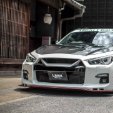Nissan: Base Model Gt-r Does 7:29 At Nurburgring
Announcements
-
Similar Content
-
Latest Posts
-
Replaced the stalk and still no luck. Any tips are appreciated
-
Yeah I agree. I have the Plat Pro on the race car because plug in was important, but I wouldn't buy one for a current car. While they are still happy to sell them (pretty expensive), they don't support them any more; no software updates since about 1996, limited or no support for newer features on the CAN etc etc
-
Yeah, I probably would, because not everyone has that sort of coin to drop on a car. Depends if you want the last 1/10th of potential out of the platform Plus, these days the cars are more like classics than a leading edge race car, so why do all that work when a nice pair of twins can still bring a smile
-
Great write up Callum, I'd have to say other than the bonnet stay (that was a new one to me), your experience probably isn't that far outside average.....these are old cars now and are their days as a cheap daily are long gone (if they ever existed).





Recommended Posts
Create an account or sign in to comment
You need to be a member in order to leave a comment
Create an account
Sign up for a new account in our community. It's easy!
Register a new accountSign in
Already have an account? Sign in here.
Sign In Now